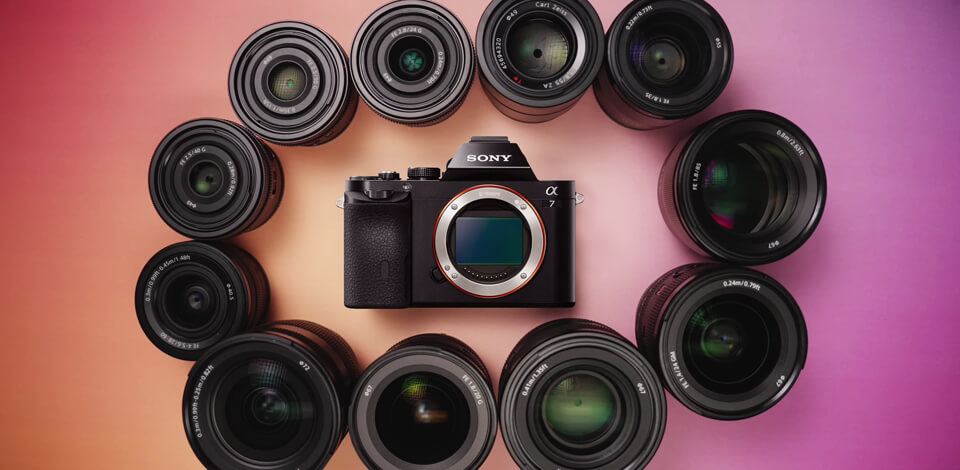
Choosing a lens for Sony A7 sounds simple until you see the range of options available. As someone who works at FixThePhoto and uses these lenses regularly, I’ve seen what works and what doesn’t.
This article is based on real practical experience, not just tech specs. We’ve had lots of readers asking for the overview of the best Sony A7 lenses, so I’m excited to finally share it with you.
To create this guide, we tested over 20 lenses for Sony A7 on several cameras, including the A7 III, A7 IV, and A7R series. Some of the lenses are ones we use all the time in our studio. Others we bought or rented from LensRentals and AdoramaRentals. Our team tested different models – from budget-friendly picks to top-tier pro lenses, ranging from $223 to $2,048.
 Sony FE 50mm F1.8 ★★★★★ (5/5)
Sony FE 50mm F1.8 ★★★★★ (5/5)
If you’re after a budget-friendly model that still delivers good quality, the Sony FE 50mm F1.8 is one of the best Sony A7 lenses. It’s lightweight, sharp, and produces soft, smooth bokeh that looks great in portraits. This lens is a solid option for everyday use and a must-have for beginners looking to grow their gear without spending a fortune.
Not all lenses are a good match for the Sony A7, even if they’re made to fit this camera. At FixThePhoto, we tested dozens of them and discovered that a great lens needs more than just compatibility. Based on our tests, here’s what you should really look for when selecting the best Sony A7 lenses:
Amazon: 300+ bought in past month
B&H: 5K+ sold in the past year
Adorama: 4K+ sold in the past year

Type: Standard | Minimum focus distance: 0.45m | Filter diameter: 49mm | Weight: 186g
The Sony FE 50mm F1.8 lens is a solid choice if you’re using a Sony A7 and want something light, compact, and budget-friendly. I tried it out on a Sony A7 mirrorless camera under $1000 during several portrait and everyday photo sessions.
It’s easy to carry and doesn’t feel heavy, even after hours of shooting. Image quality is impressive for the price. The center of the photo is sharp, even at f/1.8, and the background blur looks soft and creamy. It is perfect for portrait and lifestyle shots.
In our tests, we checked how sharp and colorful the images turned out. Under good lighting, results were crisp and clean, with only a slight softness at the edges when the aperture was wide open. Color and contrast were consistent, which helps speed up editing. However, the autofocus is a bit slow, particularly if you work in dim spaces.
When Vadym tried this Sony A7 II lens, he used it for detailed product photos and portraits outside. He liked the way it handled colors and image quality. The only issue he noted was occasional focus hunting, especially in low light or challenging scenes.
Generally, we both think this lens is one of the best entry-level options for Sony A7 users. It’s perfect if you’re starting to build your camera kit and want good results without spending too much.
Amazon: 100+ bought in past month
B&H: 2K+ sold in the past year
Adorama: 1K+ sold in the past year
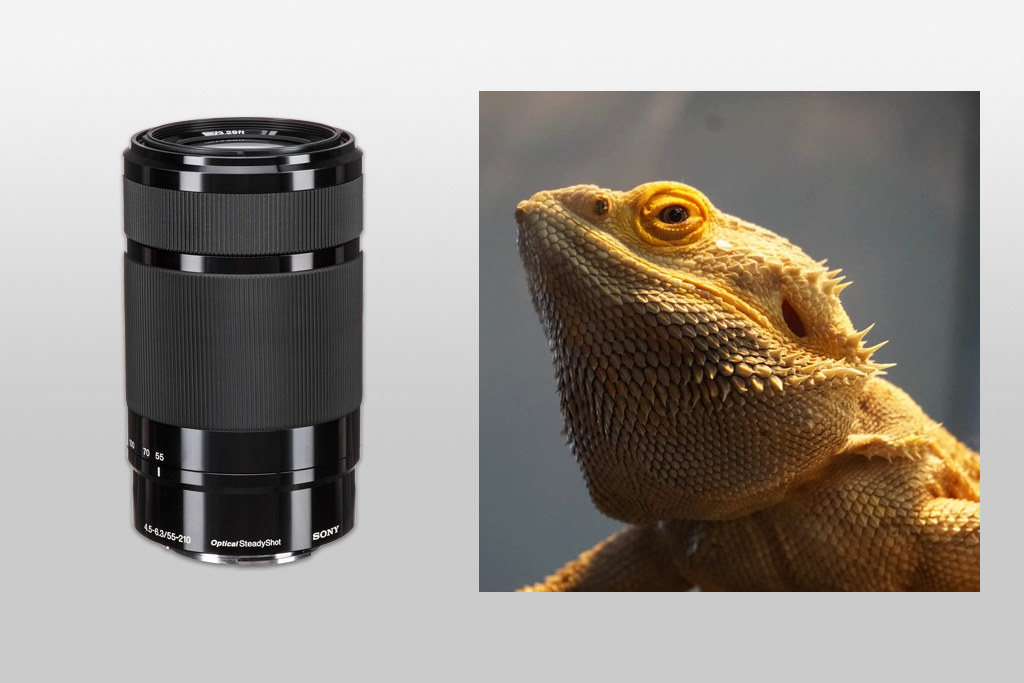
Type: Telephoto | Minimum focus distance: 0.55m | Filter diameter: 49mm | Weight: 345g
I’ve used the Sony E 55-210mm F4.5-6.3 as a lens for my Sony A7 for some time. It’s actually designed for crop-sensor gear, but it still performs quite well on a full frame camera. For the price, it delivers solid image quality.
Sharpness is best between 55mm and 150mm in good lighting. With a zoom range that’s equivalent to 82–315mm, it’s perfect for shooting wildlife, landscapes, travel scenes, or even portraits from a distance.
It’s also very light and compact, so you can easily take it on trips. The Optical SteadyShot helps reduce blur, especially at longer focal lengths. Autofocus is quiet but a bit slow, so it’s fine for still shots but not ideal for fast action. At 210mm, the corners can be soft when shooting wide open. To handle this, stop down.
Vadym tested the lens on his Sony A7 for capturing urban scenes and nature close-ups. He liked the resulting colors. He also appreciates the built-in stabilization, as images turn out sharp. However, he pointed out that focusing on distant objects can be tricky sometimes. As for positive aspects, Vadym praised the lens’s build quality, saying it feels sturdier than most kit zoom lenses.
Amazon: 300+ bought in past month
B&H: 4K+ sold in the past year
Adorama: 3K+ sold in the past year
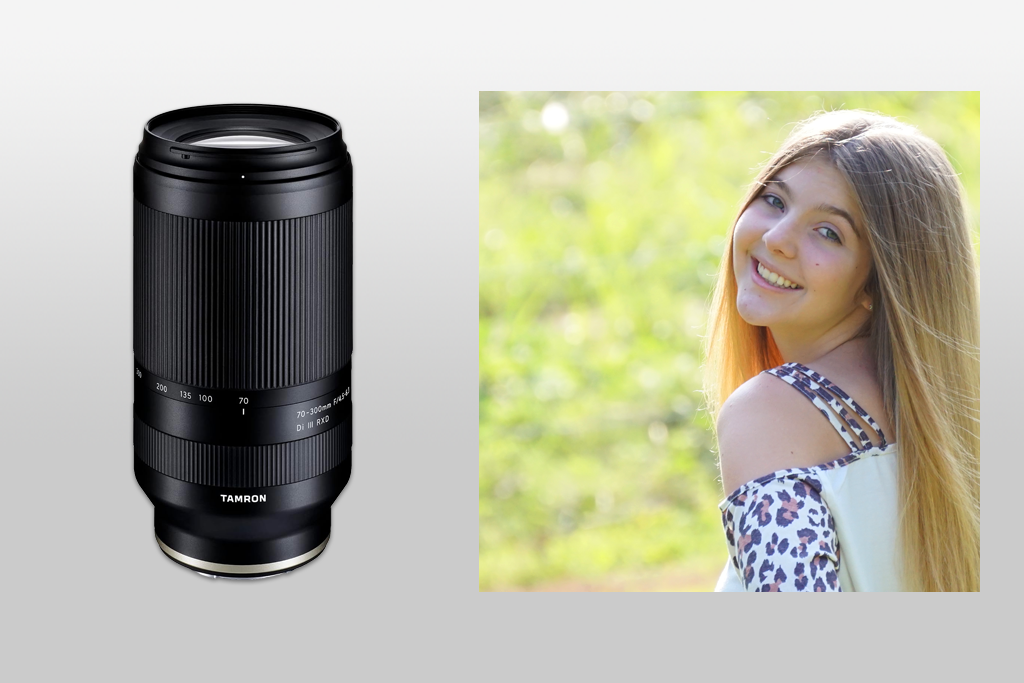
Type: Telephoto | Minimum focus distance: 0.70m | Filter diameter: 67mm | Weight: 545g
We tested the Tamron 70-300mm F/4.5-6.3 on the Sony A7 and used it mostly for portraits, wildlife, and architecture shots. Though this is a true telephoto lens, it is very light and easy to carry. So, it will cater to the needs of those who like shooting on the go.
The lens works well, with smooth zoom and a good balance on the camera. Photos are sharp across most of the zoom range, especially up to 250mm. At 300mm, it still performs well if you stop it down a bit. We also liked the true-to-life colors and the fact that there’s almost no distortion or color fringing.
Since this Sony A7 lens doesn’t include image stabilization, I had to be careful with camera shake, especially when zooming in. Thankfully, it worked fine in sunny conditions. The body is strong and well-built.
Vadym tried it with the Sony A7 II and used it to capture fast-moving people, namely, runners and bikers in the city. He was impressed by the autofocus and photo sharpness, even at maximum zoom, as long as the lighting was good.
Amazon: 50+ bought in past month
B&H: 1K+ sold in the past year
Adorama: 800+ sold in the past year
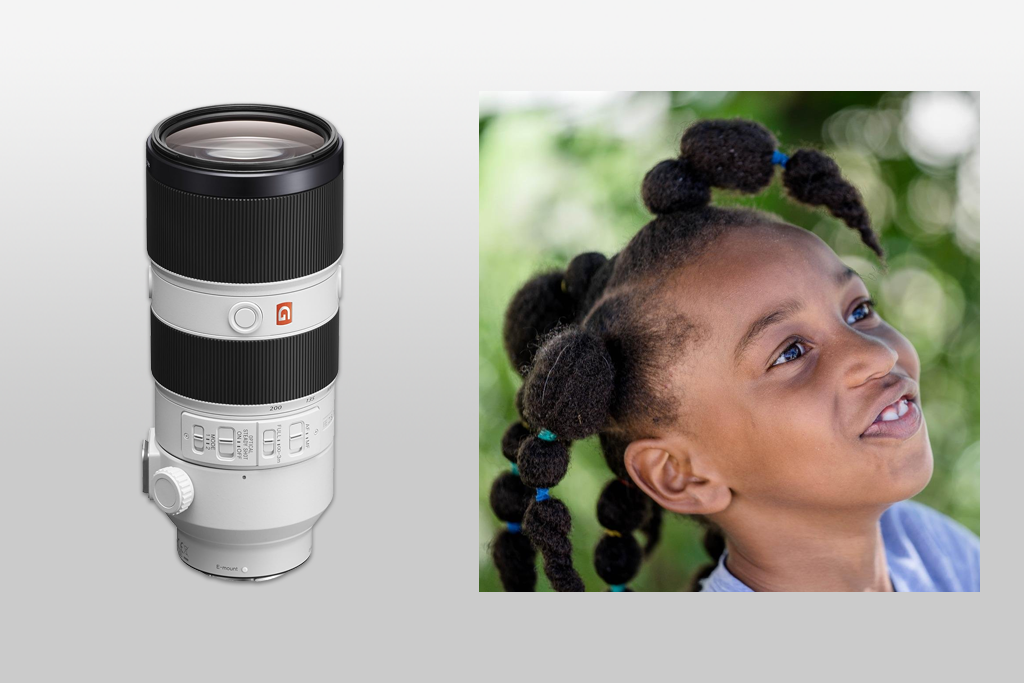
Type: Telephoto | Minimum focus distance: 0.4m | Filter diameter: 77mm | Weight: 1480g
The Sony FE 70-200mm F2.8 GM OSS is one of the best zoom lenses for A7 Sony lenses I’ve used. Whether I’m working in the studio or outdoors, it gives me sharp, colorful, and detailed photos from 70mm to 200mm. Even with the f/2.8 aperture, the images are detailed and have proper contrast. Thanks to the smooth background blur, I often use it for portrait shots.
I often shoot handheld, and the built-in stabilization helps when the light is low or when I want to shoot slower. Keep in mind that this lens is rather heavy, so it’s not ideal for everyday use. Autofocus is fast and precise, and it doesn’t suffer from focus breathing, which is great for video recording. I also tested it on close-up shots. The quality was impressive.
Vadym mounted this lens on his Sony A7 to test during an event photo session. He said it stayed sharp and performed well, even when the lighting conditions changed. He also praised the build quality. The buttons are strong, the zoom ring is smooth, and the focus is precise.
Generally, Vadym says this is a reliable lens that works well for all kinds of photos. In fact, even wildlife photographers can use it for work.
Amazon: 400+ bought in past month
B&H: 7K+ sold in the past year
Adorama: 4K+ sold in the past year

Type: Mirror | Minimum focus distance: 0.40m | Filter diameter: 52mm | Weight: 167g
After a few months of use the VILTROX 40mm F2.5 on my Sony Alpha A7, I can say this small lens really worth the price. The 40mm focal length is a bit wider than the usual 50mm, which makes it perfect for street photos, casual portraits, quick shots, and everyday use. This pancake lens is a perfect addition to the Sony A7 if you want a compact lens setup.
The image quality is sharp in the center even at f/2.5, with nice colors and very little distortion. Autofocus is quick and works well, except in very dark places. There’s a bit of darkening at the edges when shooting wide open, but it’s not a big deal. Overall, it’s a reliable lens for Sony A7 that’s easy to carry around.
As for weak points, the focus ring on this lens feels a bit loose, and the aperture ring turns too easily. I accidentally moved it while holding the camera. But for its price and small size, this lens does more than you’d expect.
Vadym liked true-to-life colors in images and said it’s a perfect travel lens. But he was a bit skeptical about the build quality. It looks good, but it’s not as tough as the best lenses for Sony a7II series.
Amazon: 400+ bought in past month
B&H: 6K+ sold in the past year
Adorama: 5K+ sold in the past year
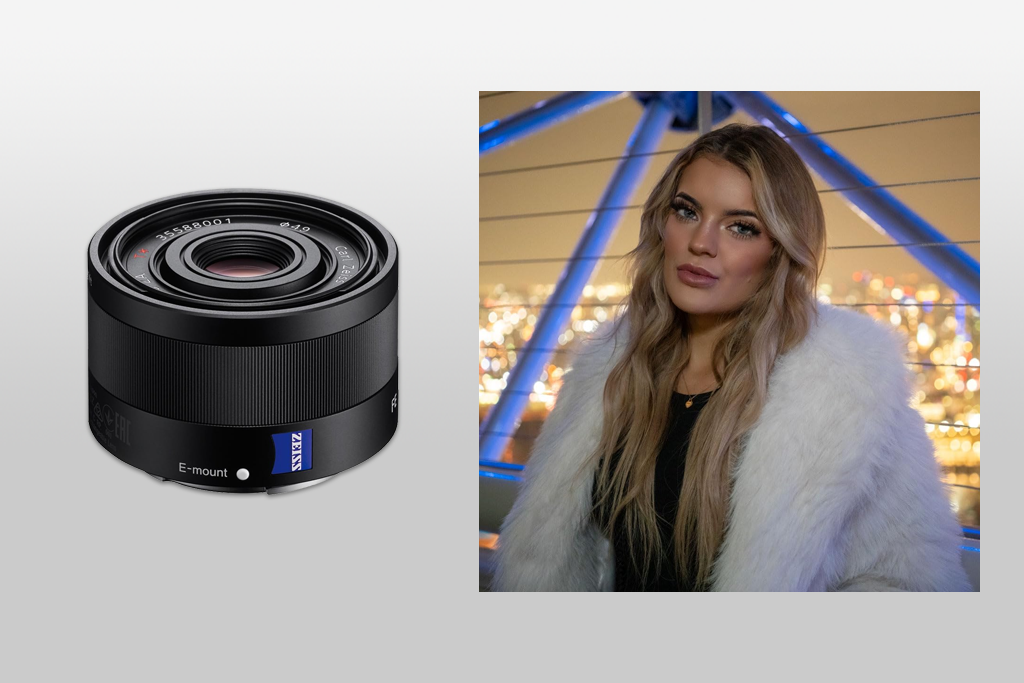
Type: Standard | Minimum focus distance: 0.35m | Filter diameter: 40.5mm | Weight: 120g
The Sony 35mm F2.8 Zeiss Sonnar is a small lens, but it doesn’t lag behind bigger models in terms of shooting capabilities. I’ve been using it on my Sony A7, and it’s become my favorite model for daily shooting. It’s sharp in the center even at f/2.8, and the colors look rich and natural.
It feels light on the camera, and the size makes it ideal for street, travel, and portrait photography. While it’s not as bright as an f/1.4 lens, it still creates a nice background blur when used right. Autofocus is fast and quiet, which is a bonus for video, too.
Vadym tested this lens for street and lifestyle photography. He marveled at the natural-looking colors straight from his Sony camera. He said the lens is small, discreet, and comfortable to shoot with. The only downside he found was flare. When shooting into bright light, the lens didn’t always block it effectively. This can affect image quality.
Amazon: 100+ bought in past month
B&H: 2K+ sold in the past year
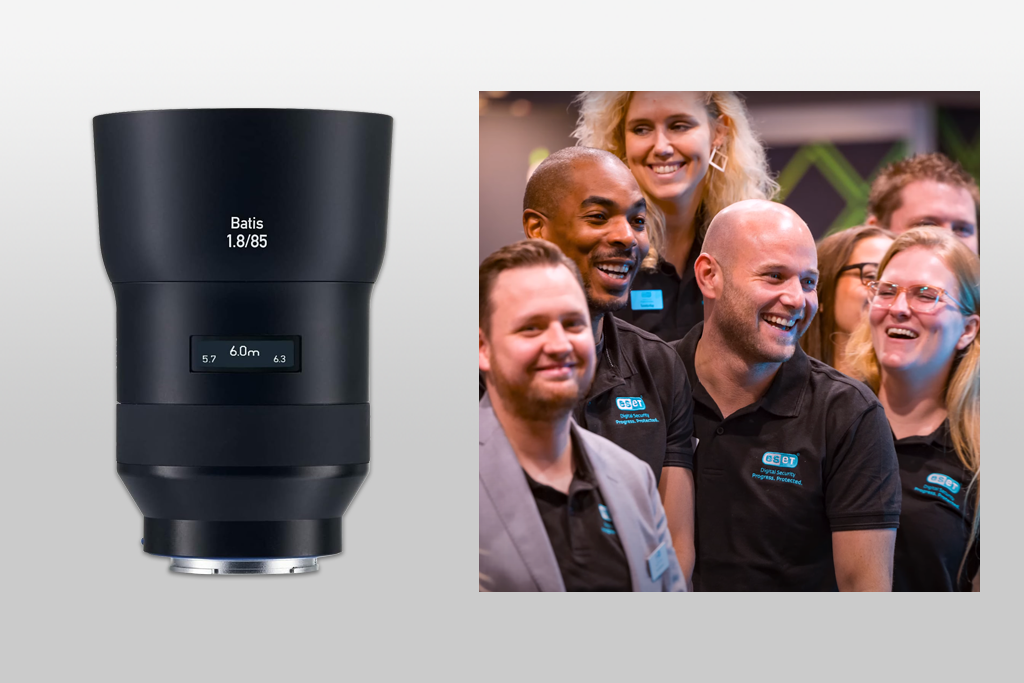
Type: Telephoto | Minimum focus distance: 0.85m | Filter diameter: 67mm | Weight: 452g
The Zeiss Batis 85mm f/1.8 is one of the best Sony A7 lenses for portraits I’ve tried. It’s light, weather-resistant, and sits nicely on the camera. This lens for portraits is comfortable to use for long shoots.
Images come out incredibly sharp, even wide open at f/1.8. Skin looks smooth and real, and the background blur is soft and beautiful. The lens also has built-in stabilization, which makes handheld shooting in natural light much easier. Autofocus is quiet and fast. Plus, there’s a tiny OLED screen on the lens that shows focus info.
Attaching this lens for Sony A7 to the camera body, Vadym took wedding and event photos. He liked the high image quality and clean photos that didn’t require much post-processing. Still, he said that the autofocus could be slightly slow in tricky lighting, like when the subject is backlit. He also pointed out that the lens is quite expensive compared to any newer Sony lens.
My colleagues from FixThePhoto and I tested dozens of lenses for the Sony A7 series. We tried everything from budget-friendly options to pro-level gear, including Sony FE 50mm F1.8, Sony E 55-210mm F4.5-6.3, Tamron 70-300mm F/4.5-6.3, Sony 35mm F2.8 Sonnar T FE ZA, Sony 55mm F1.8 Sonnar T FE ZA, Sony FE 90 mm F2.8 Macro G OSS, Sony 85 mm F1.4 GM, etc.
We didn’t include all the lenses we tested in this review. Some models showed weak results, had slow or inconsistent autofocus, or just didn’t offer sufficient functionality compared to analogs.
Hands-on testing. I tried each lens myself using the Sony A7 and A7II. I photographed people, products, and nature, to see how well each lens coped with the task.
Evaluation in real-world conditions. I paid special attention to sharpness, colors, low-light use, and background blur (bokeh). For instance, I used Zeiss Batis 85mm f/1.8 for outdoor portraits in tricky light, tested Sony FE 50mm f/1.8 for everyday scenes and natural light indoors, while Sony E 55–210mm was analyzed for long-term use for nature, animals, and zoomed-in portraits.
We also checked the handling and build quality of each lens. We wanted to pick the best lenses for Sony A7 that are comfortable and easy to use. Besides, we picked models with a silent AF and complete compatibility with the Sony A7.
Vadym focused on video testing:
To find the best Sony A7 lenses, we used them in real-life situations. For example, we take everyday images, photos for clients, and more. Next, we compared them side by side to see which ones deliver better results.